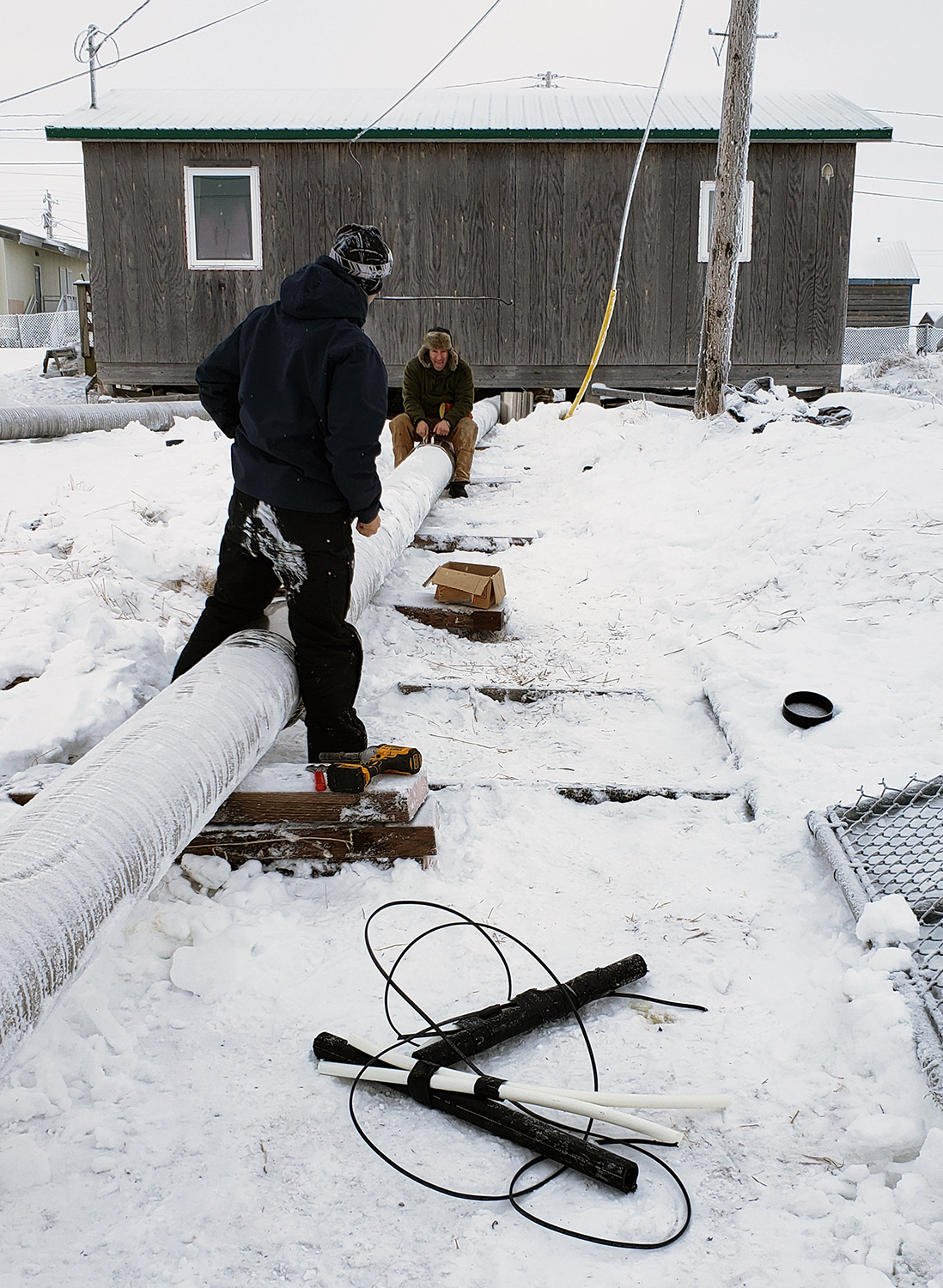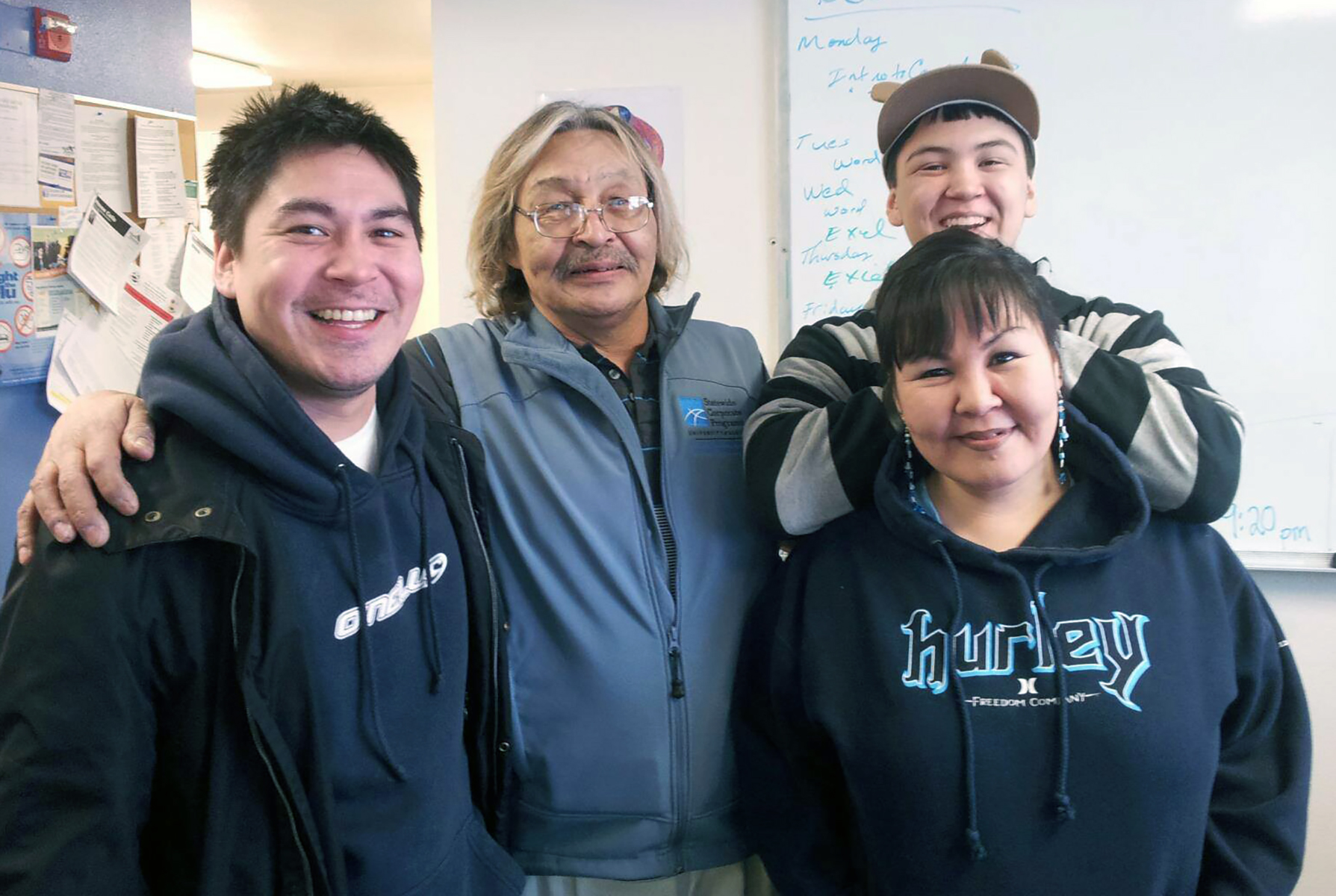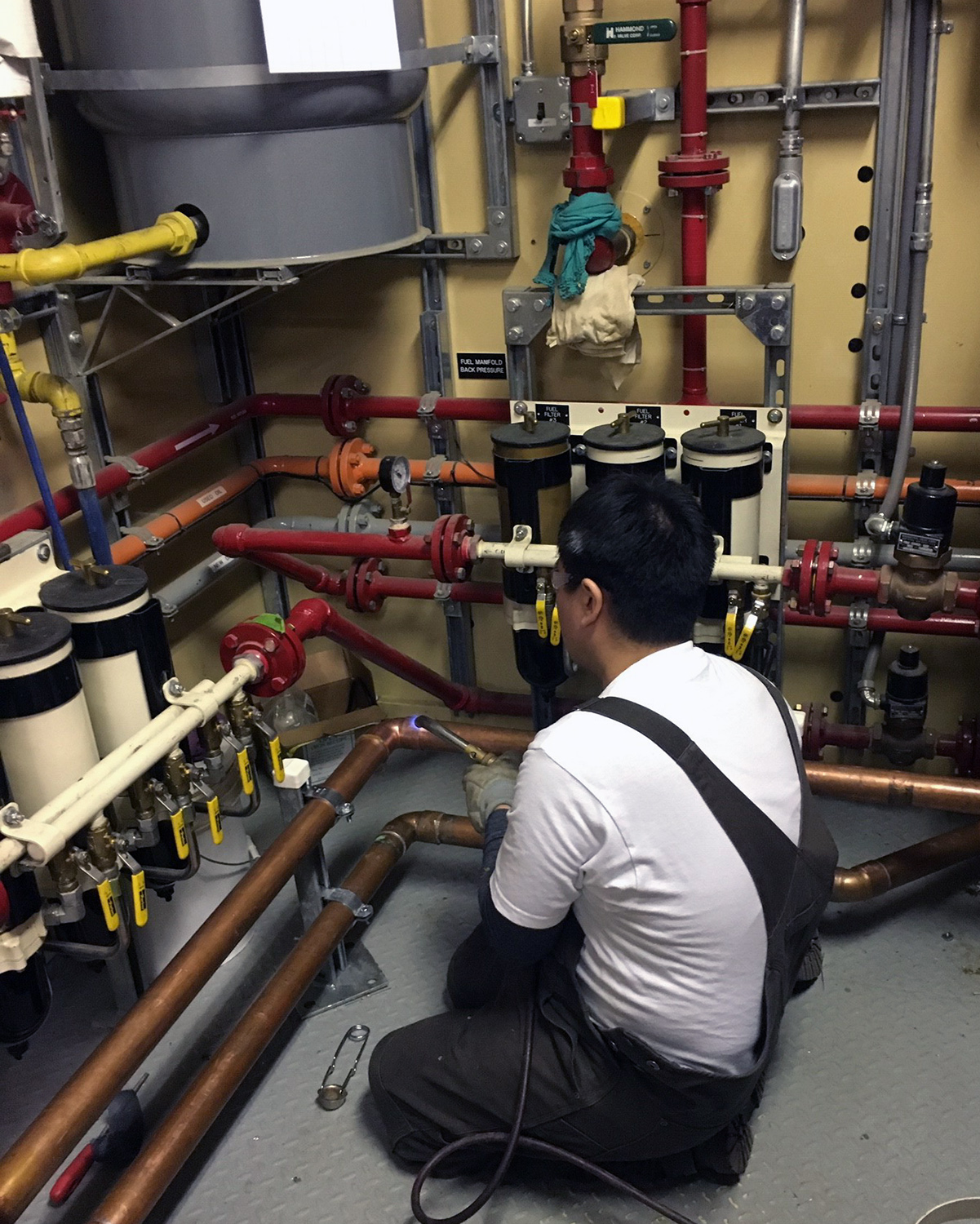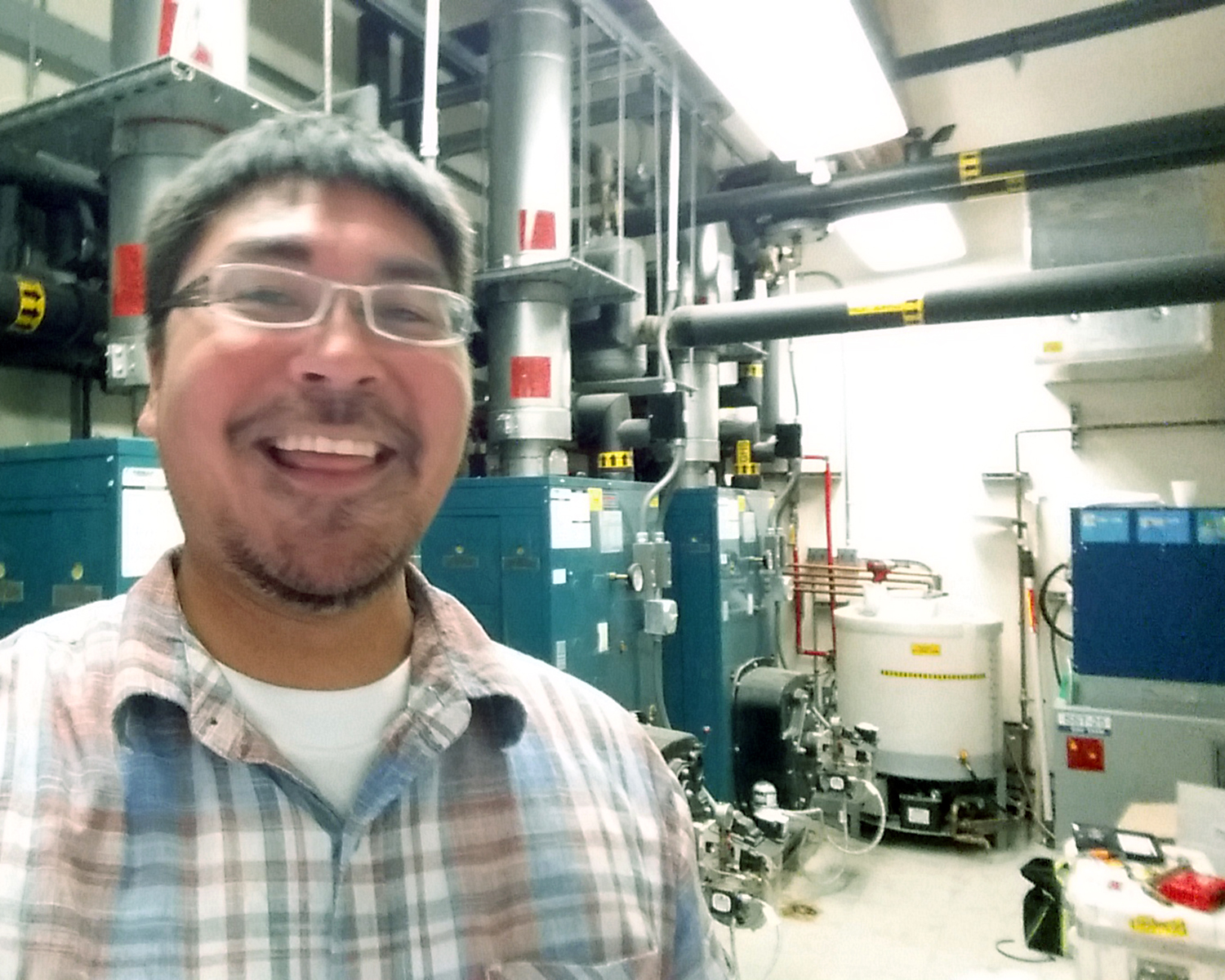Back to His Roots
Shawn Takak

Profession: Engineering Project Manager with the Alaska Native Tribal Health Consortium
Degrees: Bachelor’s in Mechanical Engineering, UAA
Shawn Takak grew up in Anchorage, but his work takes him back to his roots in rural Alaska, where he helps to build and upgrade water and sewer infrastructure – including saving some communities huge amounts of money. Here he talks about his journey to an engineering degree and a fulfilling job.

Please tell me a little about the work you do.
I am an Engineering Project Manager with the Alaska Native Tribal Health Consortium (ANTHC) in their Division of Environmental Health and Engineering (DEHE). I work in the Alaska Rural Utility Collaborative, a subdivision of the Department of Rural Utility Management Services. We have 26 water and sewer plants where we help manage day-to-day operations and any required maintenance, mainly in the Bethel, Kotzebue and Nome regions.
In the summertime our big projects are connecting homes with water and sewer service. Our other big work is heat recovery. We work with our local power plants and capture waste heat from the generators, and use that to help heat our water treatment plant buildings, among other things. Most of our water plants use diesel-fired boilers to heat the water, so generally the savings to the community come in the form of not having to buy diesel for the boilers. For example, our group did a heat recovery project in Quinhagak. Prior to the project they used 30,000 gallons of fuel in one winter for their water plant. After we had built the heat recovery system, the next winter they used 300 gallons. So, a humongous difference in costs.

In our day-to-day operations we come across issues with equipment or other major components that keep our facilities running. Luckily, we have local water treatment operators and regional managers that try to troubleshoot the problems, but if they can’t figure it out we will travel out to the communities. If it becomes a major problem the entire office will brainstorm and find a solution. We have a small team of about eight people. We work together and if it is something that one of us can’t figure out somebody else usually has another solution or an idea we can try to help solve the problem.
What was your journey like to get to this point in your career?
I am born and raised in Anchorage. My parents both come from the Nome region; my mom from the village of Golovin which has about 120 population, and my dad grew up in Unalakleet which is just under 1,000 people. Both of my parents’ families moved to Anchorage when they were in junior high and high school. It wasn’t until junior high that I went to a small community like Unalakleet – well, I consider it small, it’s one of the bigger communities in that region. I started going back in junior high and high school, and spending part of the summers there and it was a new experience for me. When I would go, I would stay with family, and they had running water and sewer service but there were still some places that had older homes that didn’t have those types of service connections.
It was also around that time when I was in an advanced math class, and they had these charts of career paths and math levels. Each time I would look at where the careers intersected with the math levels, they tended to point to engineering and all the different disciplines – mechanical, electrical, civil engineering. That’s when I first learned about engineering, and throughout high school I always kept that in the back of my mind.
I was a year out of high school when I applied for college. I didn’t know what I wanted to do. I applied to a couple of out-of-state engineering schools. I got accepted to each of them, but I didn’t go right away, I stayed in Anchorage and worked. My first job was at a fast-food restaurant and then I worked at Carrs grocery store for 8-9 months. I worked in all different areas in that store and then transitioned to a store management position. But I felt like that job was kind of limiting, so one day on my break I picked out a class schedule for UAA and applied. That year off between high school and college gave me time to think about what I really wanted to do.

I was the first in my close family here in Anchorage to go to college and it was all new to me. I had a lot of meetings with counselors and advisors to help support and direct me. They encouraged working with classmates and joining different clubs - engineering or science groups, to reach out and become more of a part of the community on campus.
It wasn’t long before I had family going to college – I broke ground for them. I helped my brother and sisters, and some of my cousins. I gave them support and encouragement as far as pursuing higher education. I always suggested science or engineering. It was just my two cents. My older sister and I started around the same time, but she worked for the school district in the Bering Strait region and over her career she got her degree in education. There were definitely times where we called each other up and talked about how to help each other stick with it.
Being new to college and learning as I went was a challenge. I wasn’t totally college-ready right out of high school – I started at college-level math, but most of the students at UAA are required to take a number of general education courses and a lot of those classes have prerequisites. So, I think I took at least a year and a half of prerequisite classes just to get into the degree program.
Around my junior year there I took another break and worked full-time. Engineering school and engineering itself is tough. There were some classes I failed and had to retake. I was not very confident in finishing, but at the same time I had a friend and classmate I worked with over the summer, and he nudged me to stick with it, and I am really glad I did. Another friend encouraged me to take just one class, one of the last math classes in the engineering degree program. I ended up with a B which was pretty encouraging, so I reapplied to engineering full time. They had just started offering mechanical engineering and electrical engineering at UAA, whereas before I would have had to finish at UAF. So, I saw that as a plus – I applied for the mechanical engineering program and got my degree in 2009.

When I first applied to the engineering school at UAA I had little knowledge of the field. As I got further into the engineering program I started working with mentors and doing summer internships that exposed me to some of the work that’s out there. Working with professionals who had been in the industry for many years gave me some guidance and direction as to where my interests lay.
Each of my three summer internships were unique. I initially did a couple of internships with the oil and gas industry and then I transitioned into health care when I decided to apply for a summer job at ANTHC. Rather than being placed in Anchorage, I was sent to the Nome region. At the time, the region was building replacement clinics for each of the communities that they serve. That work interested me from a construction management view, as well as from a general engineering point of view.
ANTHC has treated me well and steered my path towards health care. I had a good feeling about staying with them. There are engineers and managers who have stuck around with the company, and it is good to see that commitment from people. After I graduated, it took a while, but I kept applying and got interviewed for my current position. In the long term, I think about setting myself up to stay as long as I can, helping rural Alaskans with healthcare needs.
What is some advice that you would give to students interested in or currently pursuing STEM careers?
I was told by my advisor to really stick together with my classmates as a team, taking classes together and working on homework together – I would really push for that. You get to know your classmates and it introduces you to different ways of thinking. Especially when it comes to homework, completing homework or doing test prep - all of those little things add up to a lot of support. I think getting to know your classmates and other people in the program really boosts the whole university atmosphere and experience.

When I first started, I applied to live in the dorms, and being on campus was very helpful. My roommates were also engineering students, but a year or two ahead of me. It was definitely a good experience living in the dorms. It gave me a sense of independence, learning to be on my own, moving out of the house. I would recommend it for any incoming students, especially coming right out of high school. It gave me a chance to get to know my roommates and introduced me to some of my other peers. I am actually still in touch with my first roommates, we have become close friends. I didn’t know it at the time, but it was well worth it.
Is there anything else you would like to share?
At ANTHC we take college students on for the summer as a temporary hire and if the individual is interested, we keep them on year-round part-time while they go back to school at UAA. Also, if the summer hire expresses an interest, we will work with them and look for something more than a short-term position. Typically, it will be an engineering student in their junior or senior year that we take on part-time through the academic year, and then hopefully help create a position that leads to full-time.
ANTHC as a whole really promotes higher education. They support anybody who continues on at the college level, for any type of degree - from an associate, to bachelor’s, and even into a master’s program. If I wanted to continue on pursuing my master’s, the company is really flexible about supporting the idea. There’s a lot of assistance financially and at a more personal level to individuals that want to continue their education.
Interview by Courtney Breest, Alaska NSF EPSCoR. Click here for more Faces of STEM. All photos courtesy Shawn Takak.

